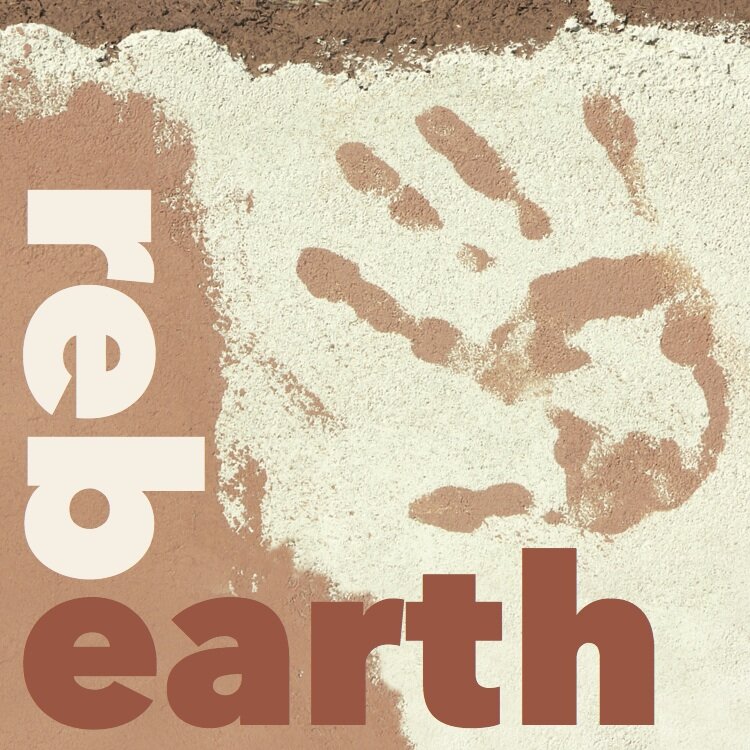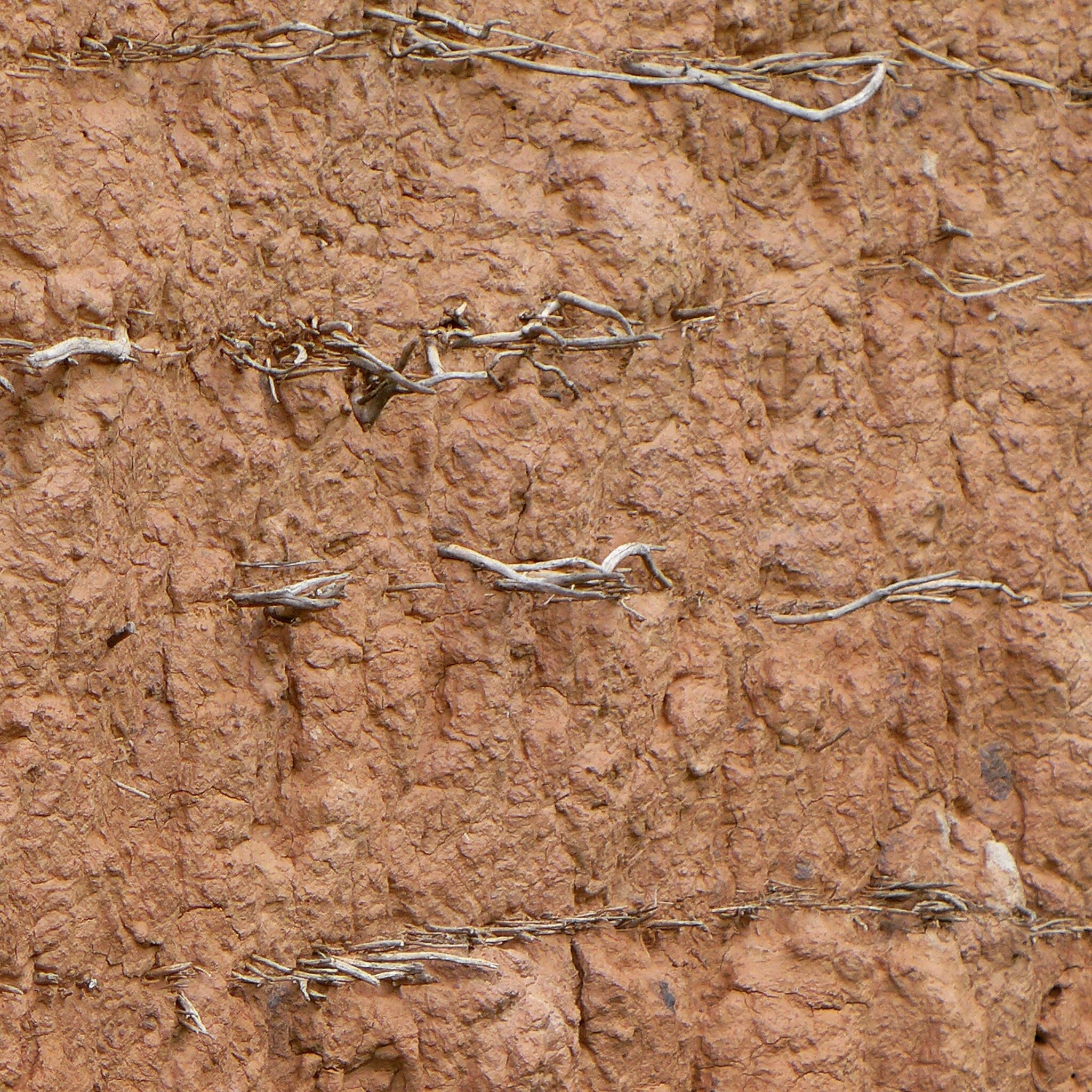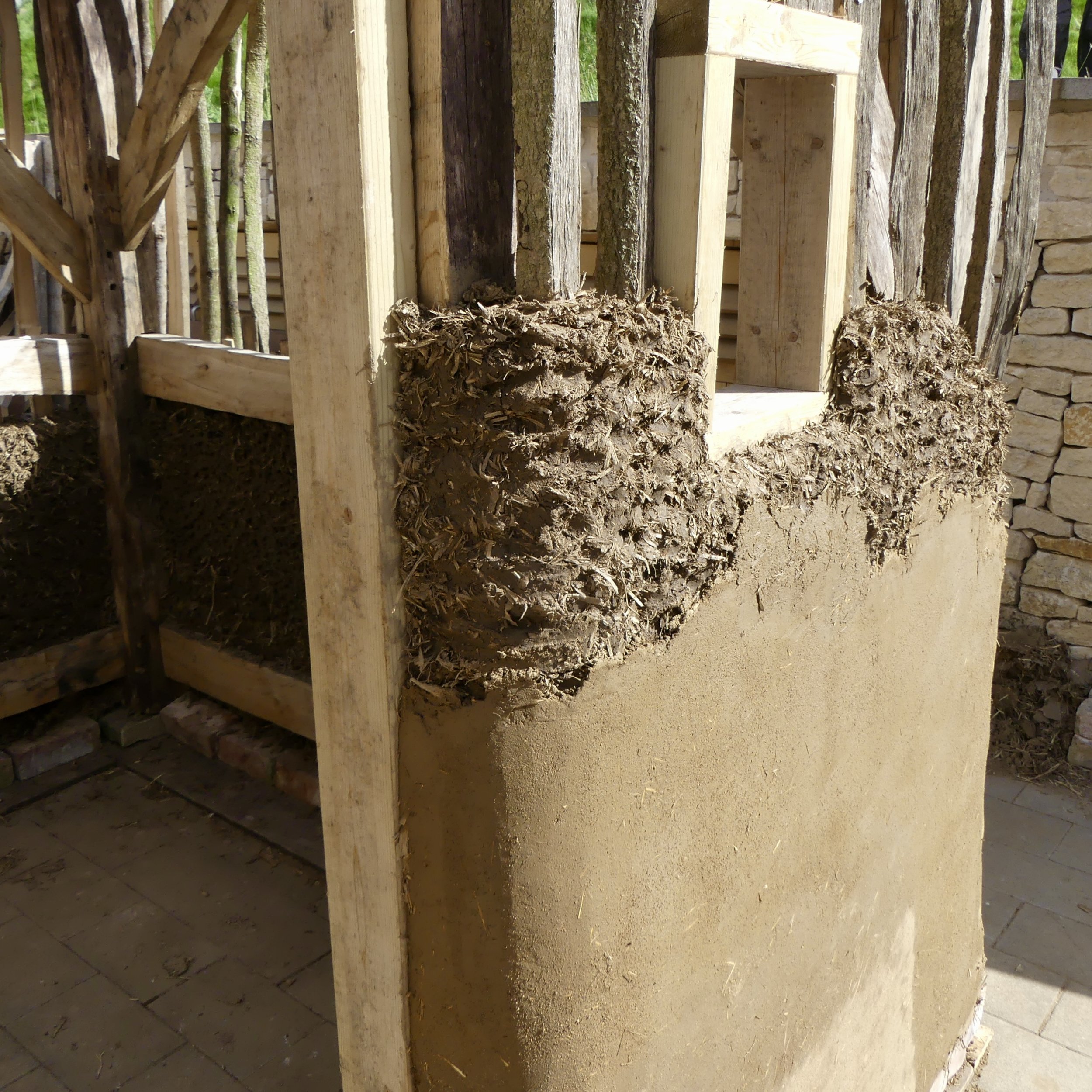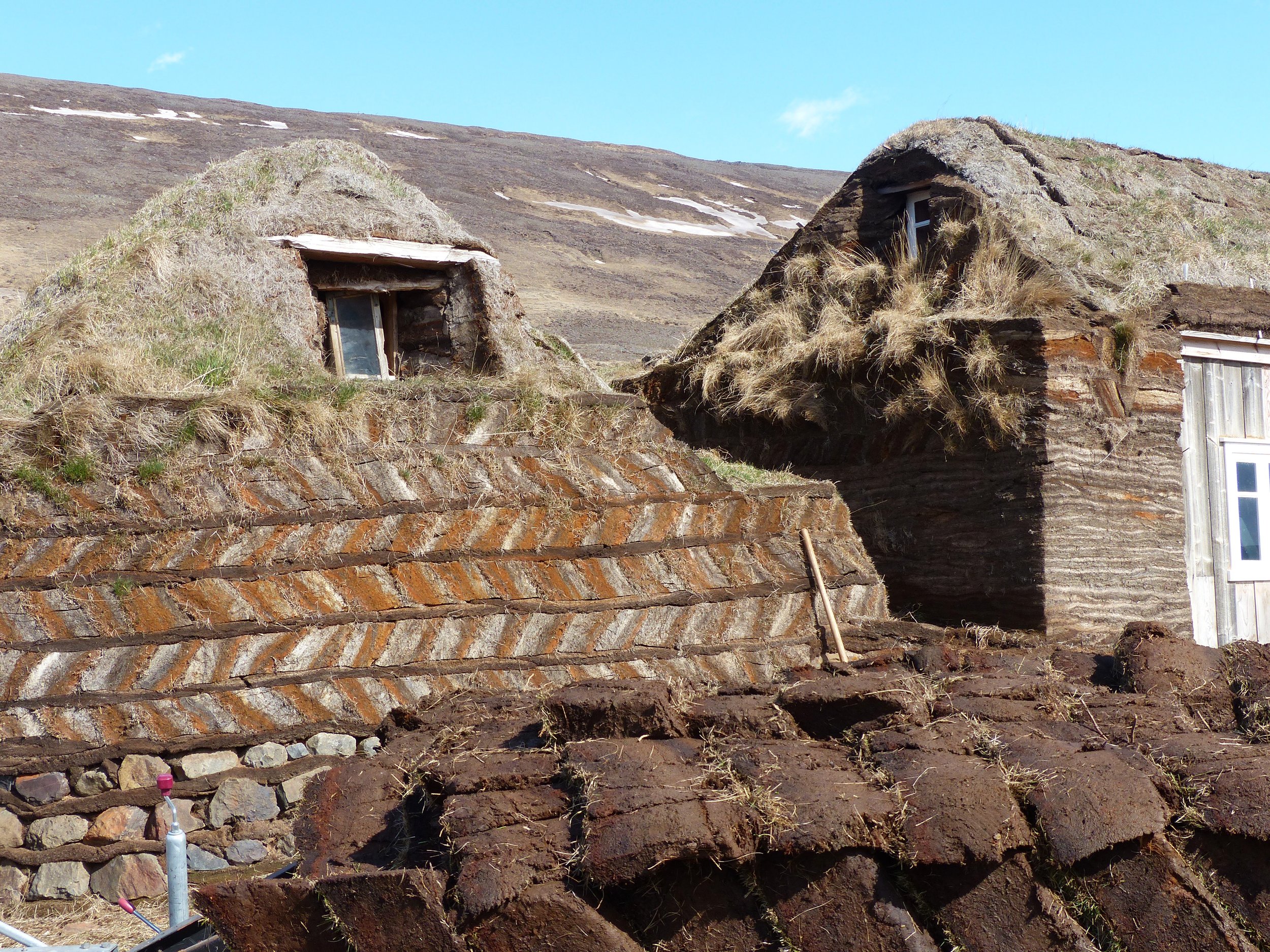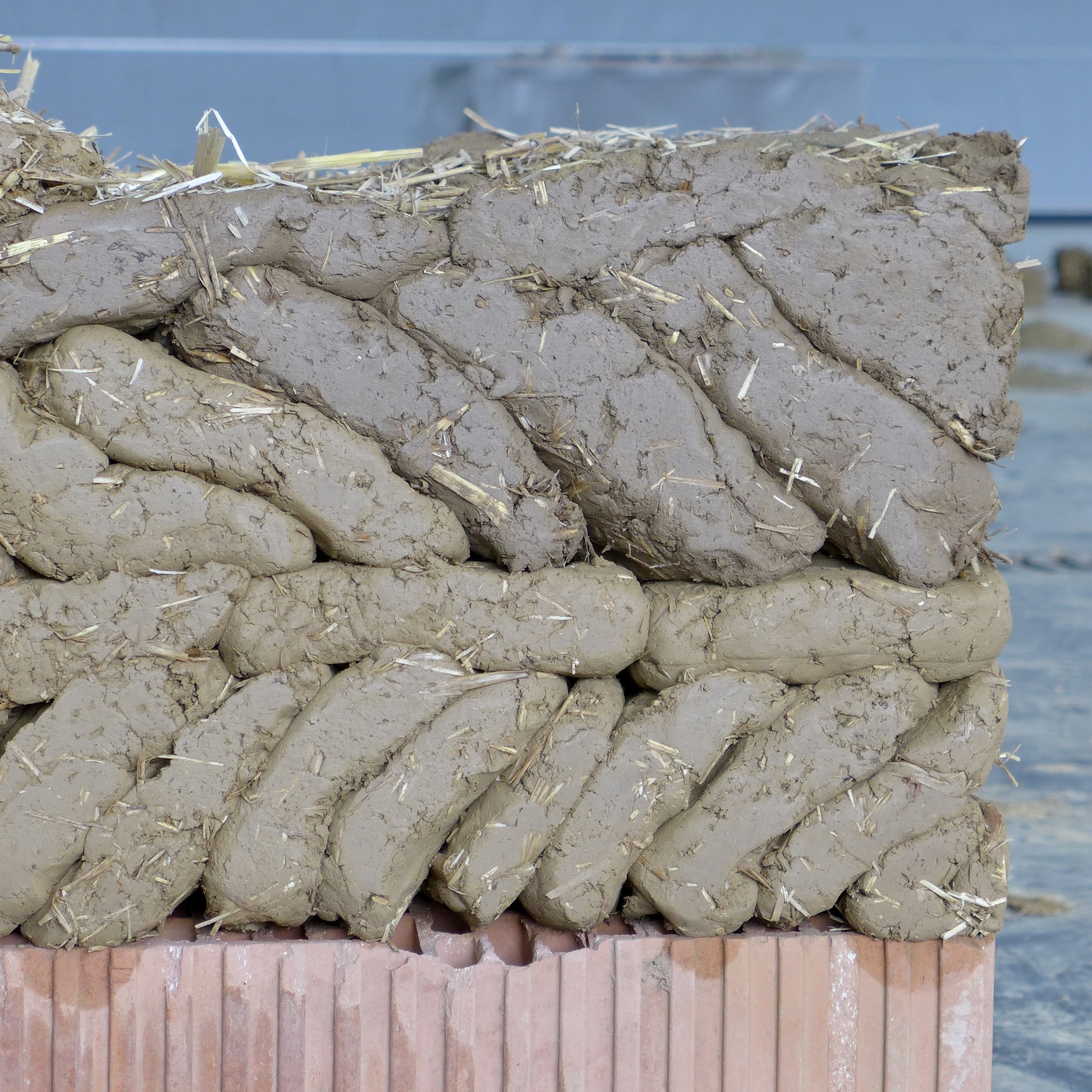The Continuum of Earth - Exploring the spaces in between.
While it is tempting and convenient by modern standards to see earth building techniques as neatly divided categories defined by soil type, mix, function and aesthetics, the reality on the ground (and with the ground) is often more fluid. When you’ve worked on a wide range of historic earth buildings, regardless of place, or maybe because of place, you begin to see a rich palette of options and opportunities that are difficult to measure or define.
Some examples from Europe might help explain what I mean – Beginning with Cob, an English version of mass fibrous earth walling built in horizontal layers to carry a load, it is simple and solid like a huge coil pot. Then travel to Estonia or France where branches or pieces of woods are placed between the mud layers for reinforcement. Back in Scotland a similar mix is applied to a vertical palisade of wooden posts called Kebber and Motte, load bearing to a degree but supported by an armature while drying so that compressive and tensile strength is gained over time. Sometimes we find straw rope woven through the posts, holding and flexing with the earth as it settles.
Moving on to Lincolnshire with it’s Mud and Stud tradition, the wooden framework becomes more engineered and takes precedence in terms of load bearing capacity over the mud mix, which is both infill and outfill, relatively light and fibrous compared to cob and completely encasing the wood for improved insulation and tensile strength. This is also a step towards light earth, a method well known in Germany and beyond where dried plants are coated in clay slip to create non load bearing layers in walls, roofs and floors. Another stop along that road and we have thatched roofs, or straw bale walls, a reminder that earth is only part of the story.
Mud and Stud technique, created at Clayfest 2017 by Rob Ley and colleagues.
Then returning to heavier daubs inside the medieval stone castles and tower houses of the UK, we are really talking about very thick fibrous plasters applied to a lattice of sticks or lath, (modern mesh in plaster being the lightweight equivalent of woven sticks). In Scotland these kind of fibrous mixes have also been used to create floors, furniture, stoves, heated walls or smoke collecting canopies (hanging lums) over fires. There’s a whole other journey to be made to explore the relationship between earth and fire…….but for now let’s keep going with the continuum idea.
Clay Dabbins, layered mud and straw, Cumbria
Turf Building, Iceland, where different types and shapes of turf block are used for walls and roofs
Let’s jump aboard a Viking ship to Iceland and marvel at the turf bricks, cut in beautiful flat fibrous tiles that echo the layers of straw in a Cumbrian Dabbins, or in thick chunky blocks (called Klambra) laid in exquisite herringbone patterns, the cosy adobe of the north. The whole of the sun blessed world seems to have adobe in some form or other, even East Anglia with it’s big Clay Lump blocks. Meanwhile we will meander our way back through Eastern Europe and Brittany, where wet mud bricks are laid while soft and malleable in tight herringbone patterns, giving a nod to those Icelandic turf builders who know that diagonal joints can tighten over time with damp shrinking materials under compression.
Wet mud blocks laid herringbone style, Amaco training course, France
The last leg of this tour across the continuum of earth might feature subsoils that were destined to be sieved or graded into bedding mortars in a wetter climate (with or without lime - a whole other story) but in drier climes are beaten or rammed into moulds and shuttering where the sun dries them into bricks, walls and floors. I make a link here between mortars and rammed earth because they tend to be short on fibre and high on aggregate, but that is my perception as a Scottish earth builder. Speak to a Spanish mud mason and they will recognise other connections and differences between materials and methods. Mortar can be many things. There is a small area in north east Scotland where fibrous mud mortar was used in thick horizontal beds with round river washed boulders, named intriguingly as Clay and Bool or Auchenhalrig work, again the herringbone pattern predominates. And sweeping back to where we began, if you beat and shape mud walls with a garden fork you tend to create diagonal tooling as the body’s natural response to the material and form. This tooling can be found on many Mudwalls in lowland Scotland unlike the trimmed and carved Cob in the south west.
Mud bricks and mud mortar, the same material used in different forms in different places
So why does all this matter, apart from the beauty, diversity and resilience of materials and techniques adapted to people and place over huge timescales. For me there’s something inherently healthy and exciting about mixing ideas, blending soils, liberating the materials from the confines of labels. By embracing detail and nuance, hybrids become possible (see Cobbauge), composites match contexts, generalisations can be replaced by specifications responding to local needs and opportunities. Perhaps it’s time to put more emphasis on the spaces in between.
